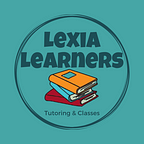Letter Reversals
A mom in our support group asked, “I’ve noticed my daughter’s writing letters backwards, I thought that was a normal thing for kids to do from time to time, but then I noticed her writing her name backwards. So, when do we become concerned that this isn’t normal instead something is wrong.
Now that I have moved on to the sight words, I have noticed ¾’s way through she starts saying them backwards. For example; ‘new’ was read as ‘wen’, ‘out’ was read as ‘tuo’, ‘what’ she began to sound out ‘ta’. Shortly I realized the pattern, so I stopped and tried from where she started struggling, and she got them all right. Is she one of those who experience dyslexia? As I see such reversed letters. The question arises, seeming its intermittent, ‘How does dyslexia work?”
Unfortunately, not a lot of research has been done on the subject. Many children reverse or flip letters, numbers and even short words, like my daughter is doing, around the ages of five to seven years old. Many kids outgrow reversing as they become better readers and more proficient at writing. By eight, most children have mastered directions in both reading and writing that they previously found confusing. Common areas of difficulty are letters b and d, p and q and the numbers 2, 5, 6 and 9.
Letter reversals are, mostly, due to a weak memory or lack of enough previous experiences. Do not wait to see if it is a problem for your child instead take a step to help your child with their letter reversals from an early age, especially if you have noticed other learning disabilities or such traits in siblings too.
Here are some exercises that can help:
- Use multi sensory approaches, which means engage more than one of your child’s senses at a time (taste, smell, touch, sight, hearing and movement).
- Work on only one letter or number at a time. When you find your child is having less difficulty with that number or letter, you can move on to the next. Do not teach two letters simultaneously, it just leads to confusion.
- Use a mirror while saying the sounds aloud, it would help children see the difference between the two sounds.
- Show your child the difference between letters. For example; The ‘letter b’ starts as a straight line which is also how you hold your mouth when about to say the sound. On the other hand, the ‘letter d’ in contrast starts at 2 o’clock and then curves anti-clockwise into a circle before making a tall straight line up then down to the line to finish.
- Use hand motions and give child a mental trigger to remember: Dog starts with a d and they have a tail. Balloons start with b and go up in the air (if they are helium balloons).
- Provide child memory links or triggers such as ‘bed’.
- Trace letters on paper. When tracing letters, have a related picture to accompany the letters.
- Sky-writing (write in the air) or make children write in something like sand or salt.
Some Current Research Findings:
However, a 2016 study published in the ‘Frontiers in Human Neuroscience’ rejected the claim that reversals of letters and letter sequences are caused by phonological deficits. Instead, the study found that visual movement can detect dyslexia early on and could be used in successful treatment to prevent children from not being able to readily learn.
What Can You Do?
Most teachers have discovered that there’s no magical cure for children who display reversals in their reading or writing. Some of the best strategies to use include:
- Help the child develop a habit. For instance, the word dog begins with a d and they have tails. Therefore the ‘stick’ is his tail and comes after his body.
- Use some connect-the-dot letters to help the child. There should be pictures to accommodate the dot letters.
- When working on the dot letter for the letter d, make sure the picture of a dog accompanies the dot letters.
- If the child has a freckle or mole on one hand or the other, use that freckle to remind him/her that it always points to the stick/circle part of the letter. The good news is that most of the letter reversals will go away once the child starts using cursive writing.
You can buy helpful material for your child here: Lexia Learners Teaching Resources | Teachers Pay Teachers
References
https://www.thoughtco.com/students-letter-reversals-3111350
https://thisreadingmama.com/multi-sensory-activities-teaching-reading
